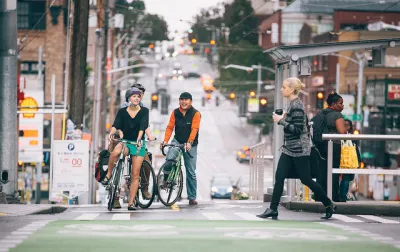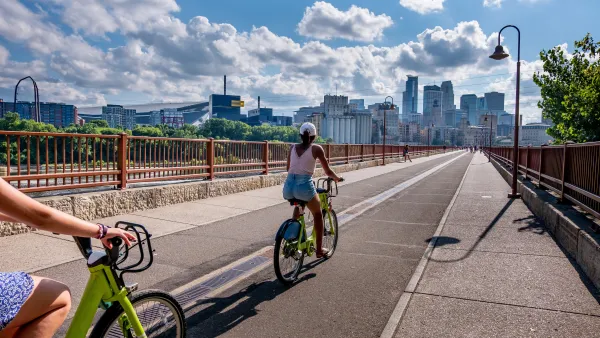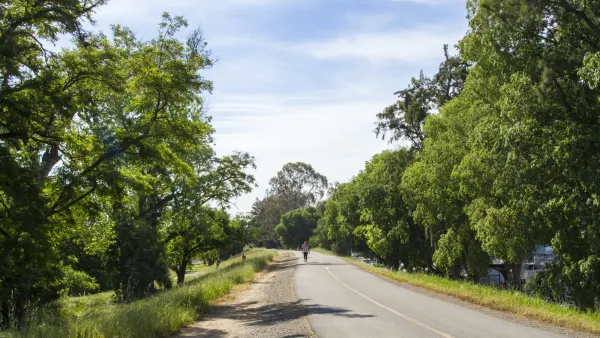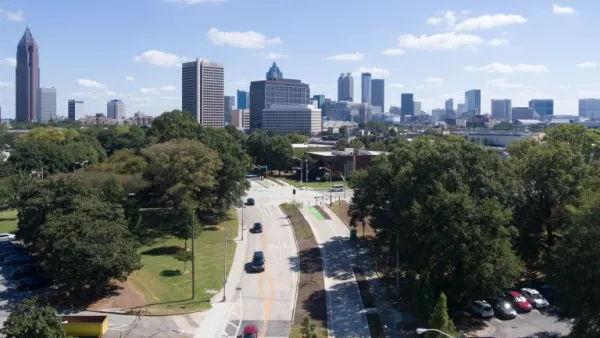A national philanthropic program designed to help cities produce more bike infrastructure has been a resounding success, according to recent analysis.

A team of researchers—Wilton Olver, Yonah Freemark and Yipeng Su—at the Urban Institute published findings of an examination of the Final Mile Program, launched in 2018 with philanthropic funding to jump-start municipal bike infrastructure improvements. According to the source article, the program "supported a combination of advocacy, communications, and engineering support in Austin, Denver, New Orleans, Pittsburgh, and Providence."
According to the research, cities involved in the program built more, higher quality bike infrastructure than other cities. "By the end of 2021, all Final Mile cities except New Orleans reached the ambitious cycling infrastructure mileage goals set by local officials: Austin and Denver completed at least 100 miles of improved bikeways during the program, significant expansions in investment compared with previous years," according to the article.
The research team conducted interviews in each funded community to discover the keys to the program's success. "Three explanations stand out: local government leaders committed to an ambitious, public mileage goal; they were continuously held accountable for achieving that goal, thanks to the active involvement of nonprofits and media campaigns; and they received new technical assistance for engineering," according to the article.
The article opens with the suggestion that the program might reveal general conclusions about the ability of U.S. cities to get more of their residents to ride bikes instead of driving everywhere, but the connection between infrastructure expansion and mode share increases isn't made in the article. Evidence from New Zealand, published in 2014, suggest that robust bike infrastructure contributes to higher bike mode share.
FULL STORY: How Can Cities Rapidly Expand Access to Cycling Infrastructure?

Analysis: Cybertruck Fatality Rate Far Exceeds That of Ford Pinto
The Tesla Cybertruck was recalled seven times last year.

National Parks Layoffs Will Cause Communities to Lose Billions
Thousands of essential park workers were laid off this week, just before the busy spring break season.

Retro-silient?: America’s First “Eco-burb,” The Woodlands Turns 50
A master-planned community north of Houston offers lessons on green infrastructure and resilient design, but falls short of its founder’s lofty affordability and walkability goals.

Test News Post 1
This is a summary

Analysis: Cybertruck Fatality Rate Far Exceeds That of Ford Pinto
The Tesla Cybertruck was recalled seven times last year.

Test News Headline 46
Test for the image on the front page.
Urban Design for Planners 1: Software Tools
This six-course series explores essential urban design concepts using open source software and equips planners with the tools they need to participate fully in the urban design process.
Planning for Universal Design
Learn the tools for implementing Universal Design in planning regulations.
EMC Planning Group, Inc.
Planetizen
Planetizen
Mpact (formerly Rail~Volution)
Great Falls Development Authority, Inc.
HUDs Office of Policy Development and Research
NYU Wagner Graduate School of Public Service




























